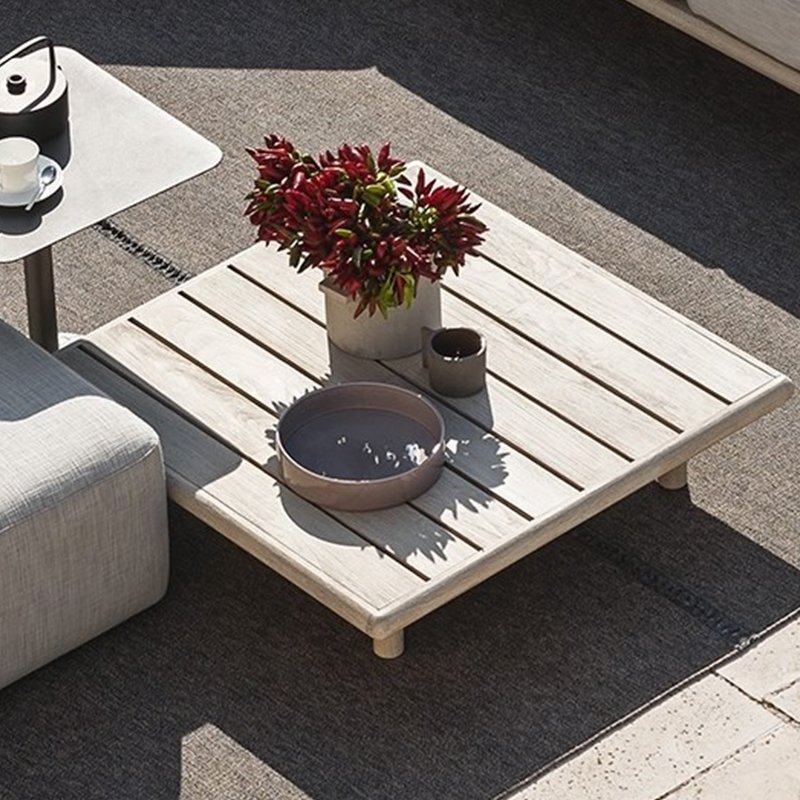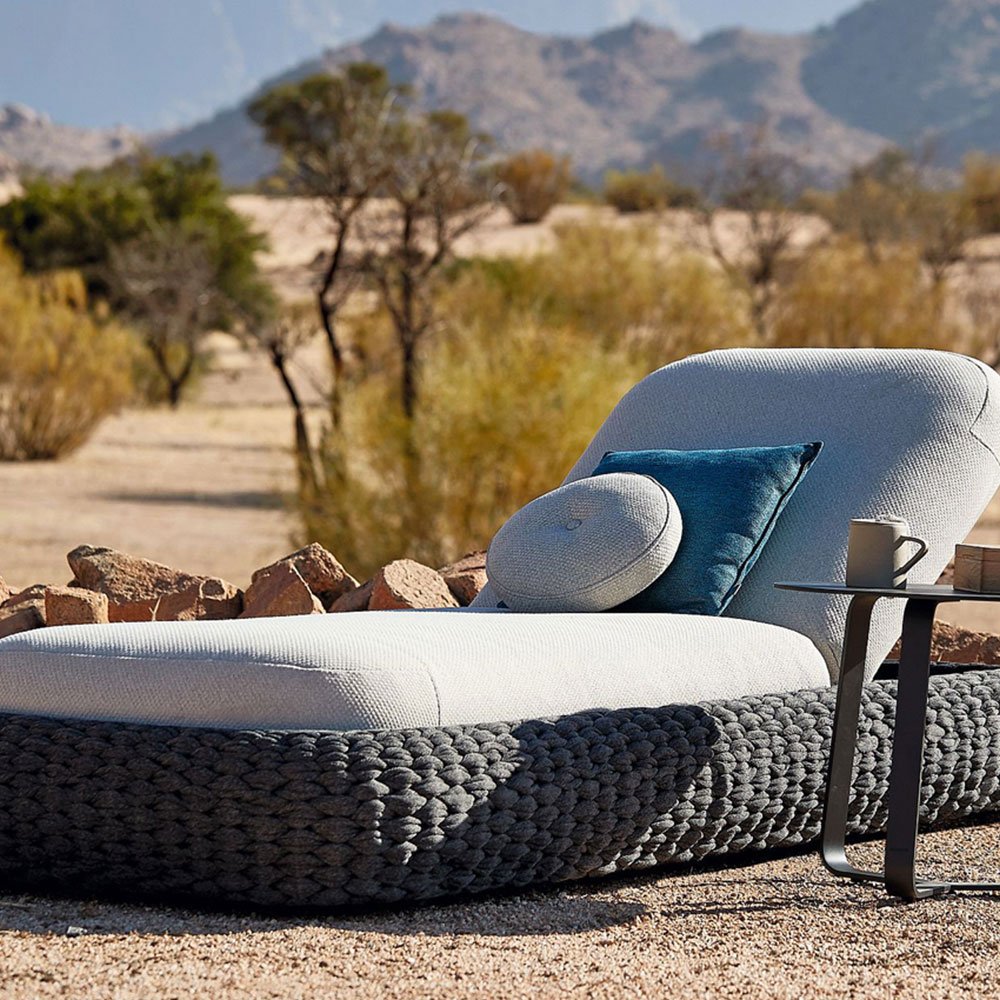An outdoor daybed is an investment in comfort, relaxation, and outdoor living. To ensure your daybed remains in great condition for years to come, proper care and maintenance are essential. Whether your daybed is made of teak, aluminum, synthetic rattan, or another durable material, taking care of it will help preserve its beauty and functionality. At Outdoor Whale Furniture, we provide outdoor daybeds that are built to last, but regular maintenance will keep them looking their best. Here’s a guide to maintaining and caring for your outdoor daybed.
1. Protecting Against the Elements
Outdoor furniture is constantly exposed to the elements, so protection is key to longevity.
a) Use Furniture Covers
When your daybed is not in use, covering it with a high-quality, weather-resistant furniture cover is one of the easiest ways to protect it. Covers shield your daybed from rain, sun, dust, and debris, preventing wear and tear over time. Choose covers made from durable, UV-resistant material to keep your daybed safe from harmful sunlight.
b) Move Cushions Indoors
Outdoor cushions can become damaged by prolonged exposure to moisture and UV rays. To extend the life of your daybed cushions, store them indoors or in a waterproof storage box when they’re not in use. Even though cushions are typically made from weather-resistant fabric, bringing them inside during heavy rain or extreme heat will help prevent fading and mold growth.
c) Add Shade
If possible, place your daybed in a shaded area or use an outdoor umbrella or canopy to shield it from direct sunlight. Excessive UV exposure can cause materials like wood, fabric, and synthetic rattan to fade or degrade. Adding shade helps protect both the frame and cushions of your daybed from sun damage.

2. Cleaning Your Outdoor Daybed
Regular cleaning is essential to keeping your daybed in pristine condition.
a) Teak and Wood Care
If your daybed is made of teak or other hardwoods:
- Dust regularly: Use a soft cloth or brush to remove dirt and dust from the wood surface.
- Wash occasionally: Clean the wood with a solution of mild soap and water, using a soft-bristle brush to scrub gently. Rinse thoroughly with clean water and let it air dry.
- Oil or seal (optional): Teak will naturally turn silver-gray over time, which many people find appealing. However, if you prefer to keep its golden-brown color, apply teak oil or a sealer annually. This treatment helps maintain the wood’s original appearance and adds an extra layer of protection against the elements.
b) Aluminum Care
Aluminum is relatively low-maintenance but can benefit from occasional cleaning:
- Rinse with water: Use a hose to remove dust, pollen, or dirt from the aluminum frame.
- Clean with soap: Wash the aluminum with a mild soap and water solution, using a soft cloth or sponge. Avoid using abrasive cleaners or scrubbers that can scratch the surface.
- Protect against corrosion: While aluminum doesn’t rust, it can oxidize over time. Applying a protective coat of wax designed for outdoor metal furniture can help keep the frame looking polished and free from corrosion.
c) Synthetic Rattan Care
Synthetic rattan (all-weather wicker) is durable but still requires upkeep:
- Brush off dirt: Use a soft brush to remove loose dirt and dust from the rattan surface.
- Wash with mild soap: Clean the rattan with a mixture of water and mild soap, using a soft cloth or brush. Make sure to rinse off the soap residue thoroughly with clean water.
- Avoid harsh chemicals: Stay away from bleach, solvents, or strong cleaning agents that can damage the synthetic rattan material.
d) Fabric and Cushion Care
Outdoor cushions are designed to withstand the weather, but they still need regular cleaning:
- Brush off debris: Regularly shake or brush off any dirt, leaves, or debris that may accumulate on the cushions.
- Spot clean stains: For small stains, use a mild soap and water solution to spot clean. Gently scrub the stained area with a soft brush or sponge and then rinse with clean water.
- Deep clean periodically: Every few months, remove cushion covers (if removable) and machine-wash them according to the care label instructions. If cushions are not removable, wash them using a fabric cleaner specifically designed for outdoor furniture.
- Ensure cushions are dry: Always make sure your cushions are completely dry before storing them to avoid mildew growth.

3. Preventing Mold and Mildew
Outdoor furniture is prone to mold and mildew due to constant exposure to moisture. Here’s how to prevent and remove mold:
a) Keep Furniture Dry
Moisture is the main cause of mold and mildew. Make sure to dry off your outdoor daybed after rain or heavy dew. This is especially important for any fabric or cushion components.
b) Improve Airflow
Placing your daybed in an area with good airflow helps keep moisture from accumulating. Proper ventilation prevents mold from growing on the frame or cushions.
c) Treat Mold Early
If you notice any signs of mold or mildew, treat it immediately. Clean the affected area with a mixture of water and white vinegar or a specialized outdoor fabric cleaner. Rinse thoroughly and let the area dry completely in the sun.

4. Seasonal Maintenance
Different seasons bring different weather conditions that affect your outdoor daybed. Here’s what you should do to maintain your daybed year-round:
a) Spring
- Inspect for damage: After winter, inspect your daybed for any signs of damage or wear.
- Refresh cushions: Bring out your cushions and clean them if necessary before putting them back on the daybed.
- Re-oil teak: If your daybed has a teak frame, spring is a good time to apply teak oil or sealer.
b) Summer
- Apply UV protection: For daybeds exposed to full sunlight, consider applying UV protectant sprays to cushions and frames to prevent fading.
- Clean regularly: Summer often means more use, so clean your daybed regularly to keep it looking fresh.
c) Fall
- Deep clean: As outdoor season winds down, give your daybed a thorough cleaning to remove any built-up dirt, pollen, or mildew.
- Cover up: If you don’t plan to use your daybed during the colder months, cover it to protect it from rain and snow.
d) Winter
- Store indoors (if possible): For areas with harsh winters, storing your daybed indoors or under cover in a garage or shed will extend its lifespan.
- Protect frames and cushions: If storing indoors isn’t an option, make sure your daybed is properly covered with waterproof covers and the cushions are stored in a dry place.
Conclusion
With proper care and maintenance, your outdoor daybed can stay in great shape for many years. Whether it’s protecting against the elements, regular cleaning, or seasonal upkeep, these steps will ensure that your daybed remains a stylish, comfortable, and durable part of your outdoor living space.
At Outdoor Whale Furniture, we design outdoor daybeds with high-quality materials that are built to last. For more information on our products or for further maintenance tips, contact us at info@ligointl.com. Enjoy the best of outdoor relaxation with a daybed that’s as beautiful as it is durable.
Outdoor Furniture Maintenance & Care
- How to Care for Teak Outdoor Furniture: A Complete Guide for Long-Lasting Patio Style
- Tired of Cat Scratches? Here’s How to Keep Cats Off Outdoor Furniture
- The Ultimate Outdoor Sofa Maintenance Guide
- The Ultimate Guide to Outdoor Dining Chair Maintenance and Care
- All Season Care: How to Care for Your Outdoor Furniture?
- Maximizing Comfort: Tips for Making Your Outdoor Sofa Extra Cozy
- How to Choose High-Quality Outdoor Furniture: Create a Comfortable Outdoor Space
- Why choose all-aluminum outdoor furniture?
- Why an Outdoor Daybed is the Perfect Addition to Your Patio



